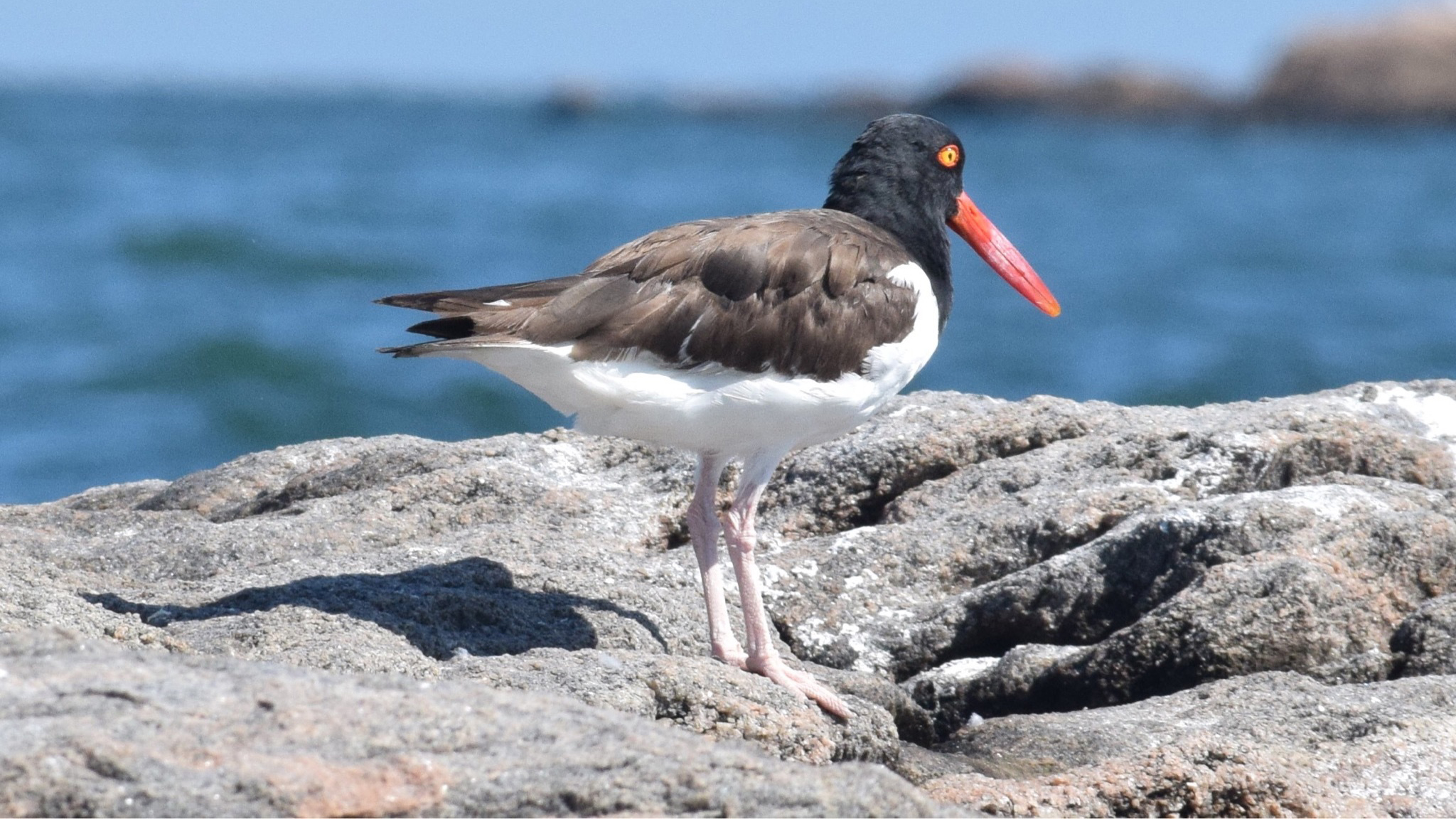
AMOY Research & Monitoring in Connecticut
Research
During 2011, the first comprehensive and targeted survey of breeding American Oystercatcher populations in Connecticut was performed by Audubon Connecticut, resulting in the first estimate of their productivity. The project then grew in 2012 with the creation of the Audubon Alliance for Coastal Waterbirds, a partnership between Audubon Connecticut, Roger Tory Peterson Institute, and the Connecticut Audubon Society. Over the last seven years the Alliance, in collaboration with Connecticut Department of Energy and Environmental Protection, has implemented management efforts statewide, contributing to the protection and understanding of the breeding population of American Oystercatchers in Connecticut.
Active stewardship and conservation efforts included surveys to determine oystercatcher population size in CT, productivity of breeding pairs, and the reduction of disturbance at breeding sites. Through intensive monitoring of the statewide breeding population, nesting and productivity data are collected to investigate the factors affecting reproductive success. The goal of the project is to determine what steps must be taken to maintain and increase the American Oystercatcher breeding population in CT and implement measures to improve productivity.
Since 2011, the breeding population in Connecticut has increased from 46 breeding pairs to 79 breeding pairs in 2018. American Oystercatcher breeding sites range from coastal beaches to offshore islands of varying size. The island sites make up 80% of the breeding sites and result in higher average productivity when compared to the mainland beach sites. This difference is attributed to predator pressure, overwash events, and human disturbance
Banding
The creation of the Audubon Connecticut American Oystercatcher Banding Program aims to further our understanding of oystercatcher demography, movements, habitat requirements, and survival. Color banding individual birds and the subsequent re-sighting of those individuals will help define distribution, abundance, reproductive success, site fidelity and habitat use in Connecticut, as well as identifying important wintering sites along the Atlantic coast.
During the 2018 breeding season, the first American Oystercatchers were trapped and banded in Connecticut. Eleven oystercatchers were banded in three of the four counties along the CT coast. The project targeted territorial breeding pairs and pre-fledged chicks at nesting sites. The newly banded birds have increased our knowledge of movements during the breeding season and of the CT population in winter migration. Already, two of our newly banded birds have been re-sighted outside of Connecticut. The individual wearing yellow band, code 2T was banded in May of 2018 at Milford Point in Connecticut and re-sighted in October of 2018 in Cedar Key, Florida. Also another individual, yellow band, code N04 banded at Long Beach in Stratford, CT in 2018 was re-sighted during October of 2018 in Georgia.
Connecticut Banding Schemes
There may be occasional variation in timing and leg placement of banding schemes).
2019-present Upper legs (both left and right) have duplicate yellow bands with black engraved three-character code in a triangle configuration, one lower leg (left or right) USFWS metal band.
2018: Upper legs (both left and right) have duplicate yellow bands with black engraved three-character code in a triangle configuration, one lower leg (left or right) USFWS metal band (Same banding scheme as Massachusetts).
View Historical Banding Information (PDF).
Connecticut Contacts
- Corrie Folsom-O’Keefe – Bird Conservation Program Manager, Audubon Connecticut
- Elizabeth Amendola – American Oystercatcher Field Technician, Audubon Connecticut
